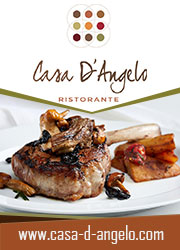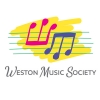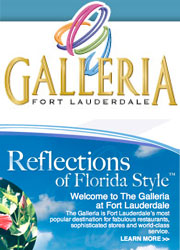Unlike most US mainland house plans, architectural styles in Fort Lauderdale embrace different design combinations and elements adaptable to its specific climate. The accent of this architecture is often on maximum use of light, sloping tile roofs, and surfaces covered with porches. Thus, the inspiration for these homes comes from various historical and modern home features, focusing on resilience, sustainability, and practicality. Their clever solutions in forms, sittings, and materials make them the perfect vacation homes. Therefore, if you plan to become a homeowner in one of the fastest-growing cities in Florida, here are some of the most common architectural styles in Fort Lauderdale to consider.
Florida Cracker architecture
Florida's wood-frame vernacular architecture has the most practical house solutions when it comes to climate and local terrain ratio. This particular style originated in the 19 century, and they are very much used in southern areas of harsh and hot environments. Most likely, they are simple, rectangular base, one or two stories height. The main characteristics are straight central hallways from front to back of the house and metal raised roofs. Like in most Florida homes, porches and verandas are their mandatory element. They are often a wrap-around, creating the perfect leisure areas and providing shades around the house. Florida Cracker home design usually does not have many decorative elements. Most of them are discreetly present on porch columns, rafter tails, oolitic limestone details, and brackets.
Masonry Vernacular Style
Along with Florida Cracker Style, Masonry Vernacular is one of the most predominant designs for modest residential homes. They are simple, undecorated, one or two stories in height, made out of concrete blocks or wood-frame structures. The outer walls are in stucco, stone, or brick facade. Like many other historical architecture homes, walls and doors are in symmetrical positions. These homes also have porches and sometimes verandas like most vernacular architectural examples. However, this feature tends to be less prominent in recently built homes.
Mission Revival
Mission Revival Style became popular at the beginning of the 20th century, but their versions continue to last even nowadays. The key features of this design are hip, gable roofs, flat roofs with Spanish-style tiles where the porch ruff has the support in the form of piers, often with arches. In addition, some of the mission revival's main characteristics are adobe walls, balconies, colonnades, and private gardens around the home. Very often, you can see curved pediments on such properties. Exterior facades are usually in stucco technique, painted in earth tones, sometimes even pink in Florida. This architectural design has close connections with the Spanish Colonial Revival Style, also present in the area. Interestingly, most architectural styles in Fort Lauderdale tell a tale of a different time, preserving cultural and artistic expressions in vernacular designs throughout the history of the US.
Bungalow Craftsman
Thanks to the British Industrial Revolutions and the following Arts and Crafts Movement in the second half of the 19th century, mass production was protested in many fields, including architecture. Modesty, functionality, simplicity, and above all, artisanship soon started to take over the dominant eclectic and Victorian style, and bungalow craftsman homes have been in use ever since. They come in many shapes and sizes, commonly sharing the same features. These homes have low-pitch, over-hanging, triangular roofs, double hanging and dormer windows, and pillars and columns along with the entry. When it comes to this particular style, the accent is on natural textures and materials. Hence, most home exteriors have details in wood, stone, brick, or stucco elements. Naturally, the facade and color focus on earthy pastels and colors that perfectly blend with such surfaces.
You can see most such homes in Fort Lauderdale in The Sailboat Bend District, located in the City's southwestern section. This district is also known for its laid-back live music venues, vibrant nightlife, and famous Broward Center for Performing Arts, which hosts some of the best events in Florida. Thus, it's no wonder Fort Lauderdale is a popular moving destination for millennials, young professionals, and artists who hire local movers so they can enjoy their new life here quickly. If you, too, decide this part of Sunshine State to be your home, your experienced neighbors can help with the move. People and services around here are like the weather - easygoing and relaxing.
Mediterranean Revival
Mediterranean-style homes in the US became very popular between the First and Second World Wars. Due to the Spanish connections, many homes with red tile roofs, plaster, and arches started appearing in Florida in the late 1920s'. Such houses are heavily influenced by Spanish, Italian, French, and Greek architecture. The emphasis here is on the warmth of exteriority and elegance, usually common amongst upper-class homeowners. Even though usually reserved for the affluent, Mediterranean-style homes have some more modest size and decoration options. The main characteristics are typically the symmetrical facade, stucco walls, and rich hardwood solution for doors and windows, often arched.
Unlike vernacular architecture, here, the details matter. Often, you can see wrought-iron elements, creative lighting fixtures, and very colorful walls in these homes. Moreover, some of the most important elements of Mediterranean revival are rich landscape and creative outdoor area. No wonder such homes are still quite popular in Florida, where creating perfect outdoor space is easy due to the tropical weather that dictates summer all year long.
Modern style homes
Over the last twenty years, modern-style homes became the favorite architecture style in coastal regions. The designs are light and breezy, using glass, concrete, and metal materials to create magnificent homes, using the best of the surroundings. According to relocation specialists in the area Best Movers in Florida, many of their clients moved to Florida beach homes because of their ecological footprint. Living in such a warm climate, homeowners can use eco-friendly, recycled, and other innovative solutions when building homes or creating energy. If you're looking for a modern design home in Fort Lauderdale, there are various sub-types to expect:
- Art Deco
- Art Moderne
- Mid-Century Modern
- Sub-Tropical Modern
Still, the esthetic of these homes follows simplicity, clean forms, and elegance. Large floor-to-ceiling windows provide the necessary light, while high ceilings and open floor plans usually follow Minimalist and Contemporary designs. Such a clear concept in the coastal areas makes them light, relaxing, and easy to maintain.
Conclusion
Many homes in Fort Lauderdale are hard to classify and define under one style label. Most often, inspiration comes from historical examples. However, the alterations are made to adapt better to the local climate, personal needs, tastes, and economy. Still, even with a deviation from the original design, architectural styles in Fort Lauderdale are some of the most magnificent examples in the whole peninsula.






















